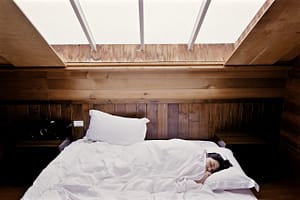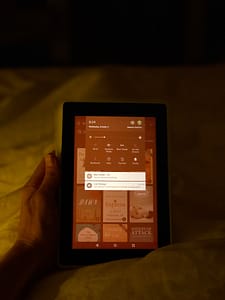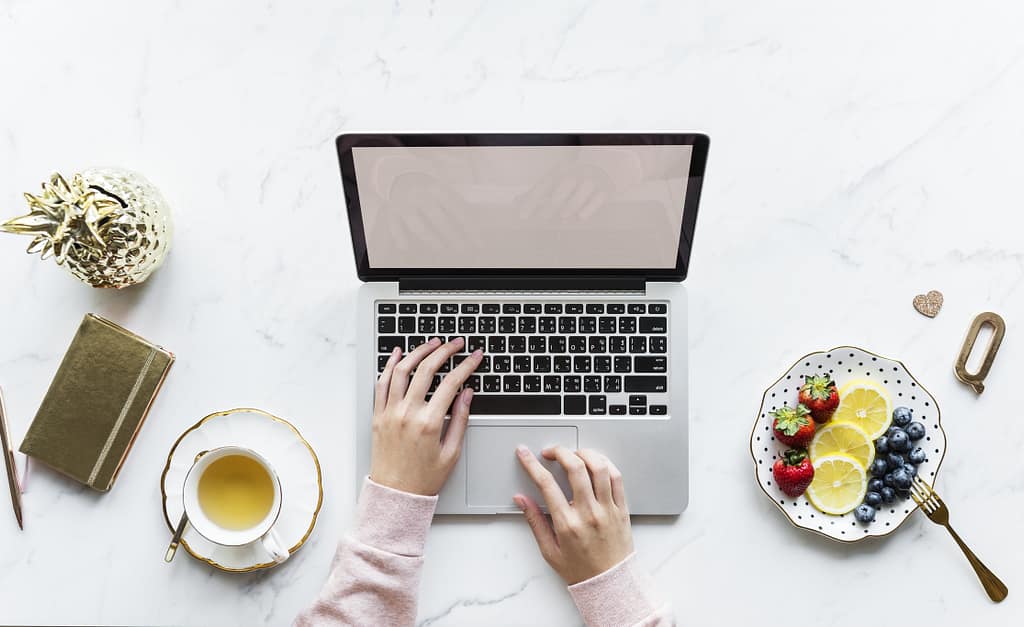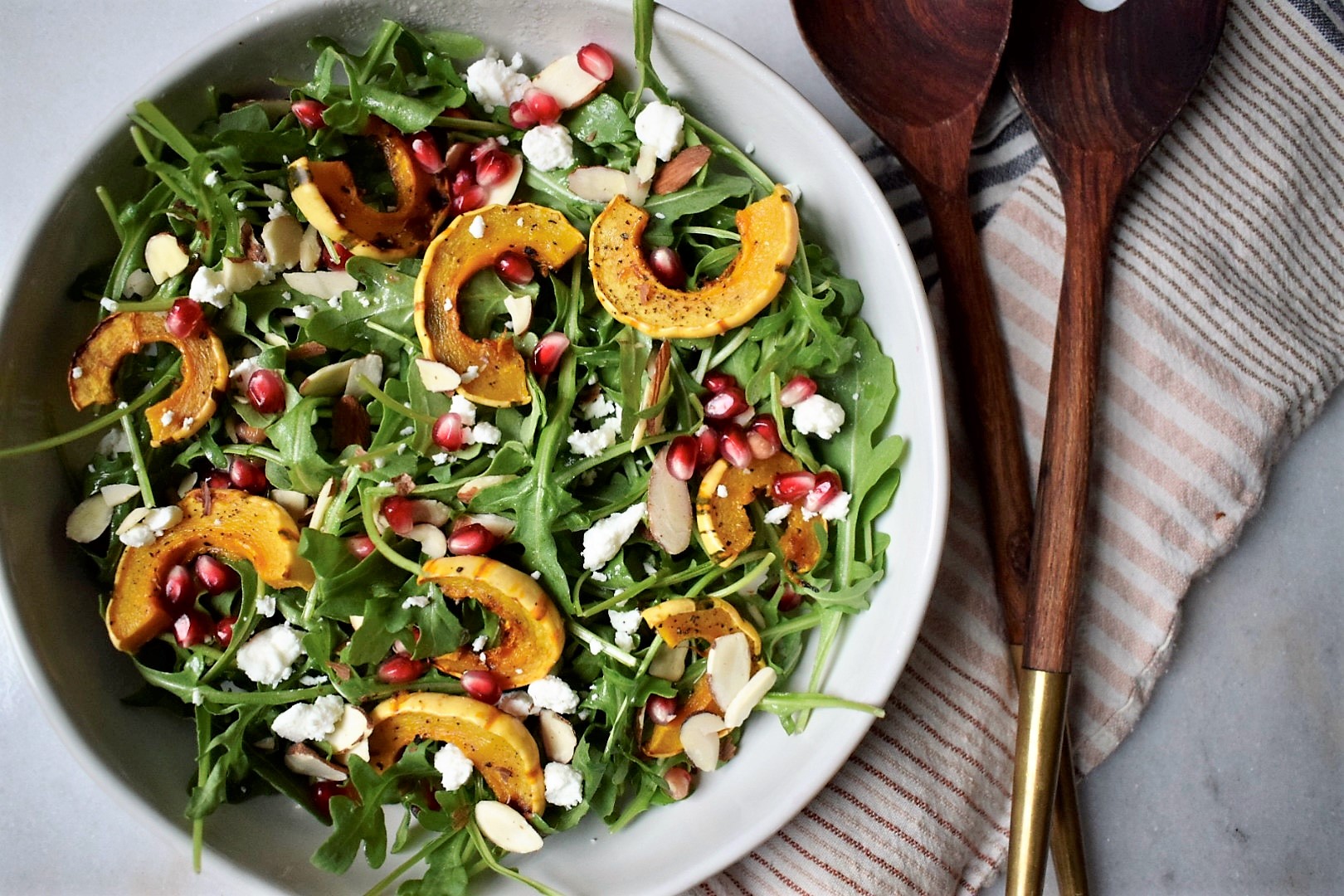The good news: it’s not all expensive. Through years of doing research, I’ve come across dozens of tips and health hacks that are completely free. And I believe each of these practices can make a big difference if done regularly. I’ll do a separate post with some relatively inexpensive ideas and suggestions, but for now, here are 7 completely free things you can do to optimize your health today.
1. *Actually* chew your food
Your mouth has teeth, your stomach doesn’t. You can eat the most amazing, organic, locally-sourced, pasture-raised food, but if it’s not thoroughly chewed, your body wont absorb a lot of that goodness. To get specific: I recently heard Jasmine Hemsley, an Ayurvedic-focused nutrition and wellness expert, say that your “food should be soup before you swallow.” Chew on that.
2. Take a cold minute in the shower or give your face an ice bath
I know, this sounds crazy… and kind of terrible! BUT Cryotherapy is all the rage right now, and a lot of health experts and bio-hackers have been doing (and swear by) a more moderate, at-home version of cold therapy for a long time. Although this is trending now, cold plunges have been a Nordic tradition for a very long time. Reported benefits include improved immunity, faster muscle recovery, fat loss, improved fertility, enhanced skin, boosting the lymphatic system, and more.
Try spending a minute with the water on cold sometime during your shower and working your way up to a few minutes over time. It’s surprisingly invigorating and I promise it gets easier! You can also get a lot of the same benefits by making a facial ice bath for yourself instead.
3. Drink enough water
 Drinking plenty of water is critical for the body to function properly. A good rule of thumb is to aim for at least half your body weight in ounces each day. So if you weigh 140lbs, that’s 70oz of water. Using a large glass or stainless steel water bottle is a great way to track how much you’ve had to drink. I have a set a goal for how many refills I have each day, and knowing I also have a glass or two with each meal makes it easier to hit my target number of ounces.
Drinking plenty of water is critical for the body to function properly. A good rule of thumb is to aim for at least half your body weight in ounces each day. So if you weigh 140lbs, that’s 70oz of water. Using a large glass or stainless steel water bottle is a great way to track how much you’ve had to drink. I have a set a goal for how many refills I have each day, and knowing I also have a glass or two with each meal makes it easier to hit my target number of ounces.
Also, try to start each day with a big glass of water first thing in the morning. If you can warm it up and add some lemon, wonderful. Otherwise, plain, filtered water right after you wake up is great on it’s own.
4. Prioritize sleep
I’ve heard numerous health experts say that sleep is more important for your health than diet and exercise combined! So, do everything you can to get your 8 hours in (or whatever amount you need, it varies slightly for each of us). Make getting adequate rest a priority.
See points 5,6, & 7 for three hacks that can optimize your sleep.
Also, if you have young children or are expecting a baby, I can’t recommend this enough: get a sleep strategy in place early on. It will make life better and healthier for everyone in the household. I’ve done it both ways, and for all involved, a feed/wake/sleep schedule from the start was an absolutely better (no crying) and more restful experience for us all.
5. Take a walk
Really, it’s about moving your body. We’re animals and we weren’t designed to sit all day. Getting in at least 30 mins of movement or physical activity each day should be non-negotiable. The easiest solution is to walk – no equipment and no gym membership needed. Walk to work, walk in your neighborhood, or go for a short walk during the work day. I used to be in back-to-back meetings all day, and once in a while I’d suggest a walking 1:1 rather than “getting coffee” when I had more of a “catch-up” meeting – people always said “yes!”
If you live under 3 miles from work, I’m going to challenge you to try walking there – even just one way. Most people think this sounds crazy, but you might be surprised that it only take an incremental 10-20 mins compared to driving. I’ve done this for most of my adult life, and it’s one of the best parts of my day, hands down. Not only is it my built-in exercise (that’s saved me thousands of dollars on gym memberships over the years), but it’s such a better way to start or end a busy day. By contrast, dealing with public transportation and traffic usually brought my mood and energy way down. I also love that a walking commute is predictable – always the same amount of time compared to the uncertainty of a typical city commute.
6. Cut down on blue light
 Adjust your devices to automatically tone down blue light in the evenings, making the screen more amber. For example, Apple products call this feature Night Shift and it takes 2 minutes to set up. It’s available on most phones, tablets, and PCs that I’ve come across. I read almost all my books on a tablet before bed and I like to use the blue light filter + the black background setting in my reading app, which cuts down the brightness even more. (This has also been good for my marriage since my husband goes to bed earlier than I do and he wasn’t a fan of the standard amount of light from my ereader every night!).
Adjust your devices to automatically tone down blue light in the evenings, making the screen more amber. For example, Apple products call this feature Night Shift and it takes 2 minutes to set up. It’s available on most phones, tablets, and PCs that I’ve come across. I read almost all my books on a tablet before bed and I like to use the blue light filter + the black background setting in my reading app, which cuts down the brightness even more. (This has also been good for my marriage since my husband goes to bed earlier than I do and he wasn’t a fan of the standard amount of light from my ereader every night!).
The amber light is easier on your eyes, and less disruptive for melatonin production and your circadian rhythm. If sleep wasn’t important enough (see point 4!), you should also know that melatonin is an antioxidant and protects against cancer development and growth. There’s a lot of emerging research linking artificial light exposure at night to disease in adults and children, so this is definitely something to be mindful about, and fairly easy to modify.
7. Use Airplane mode
 (I saved the controversial one for last!) Cut down on the constant flow of EMFs near your body. You can do this by putting your phone in airplane mode and increasing the distance of devices from your body when possible. Most phones and tablets have shortcuts that allow you to access this setting in one swipe. If you sleep with a cell phone next to your bed, have it in your pocket all day, or lay in bed reading on a tablet, this is a good habit to get into. I know there’s conflicting research on this topic. I’ve studied it a lot. And the truth is that we truly don’t know what the long term impact of EMF exposure is (especially if it begins in utero and is a constant every day starting in early childhood). At a minimum, I believe there’s reason for caution (and precautions).
(I saved the controversial one for last!) Cut down on the constant flow of EMFs near your body. You can do this by putting your phone in airplane mode and increasing the distance of devices from your body when possible. Most phones and tablets have shortcuts that allow you to access this setting in one swipe. If you sleep with a cell phone next to your bed, have it in your pocket all day, or lay in bed reading on a tablet, this is a good habit to get into. I know there’s conflicting research on this topic. I’ve studied it a lot. And the truth is that we truly don’t know what the long term impact of EMF exposure is (especially if it begins in utero and is a constant every day starting in early childhood). At a minimum, I believe there’s reason for caution (and precautions).
If you let a child use a phone or tablet, I believe it should always be in airplane mode. Manufacturers recommend that adults keep these devices a certain distance from our bodies, and that’s based on a fully formed, 200 lb man. A child’s rapid growth and size make them significantly more vulnerable and sensitive.
To wrap up...
I hope this list of 7 health hacks gave you some quick and easy ideas that you can implement right away! I’m planning to do a second installment of this topic and always welcome suggestions, so please share any ideas! Other content requests and suggestions are always welcome as well.








